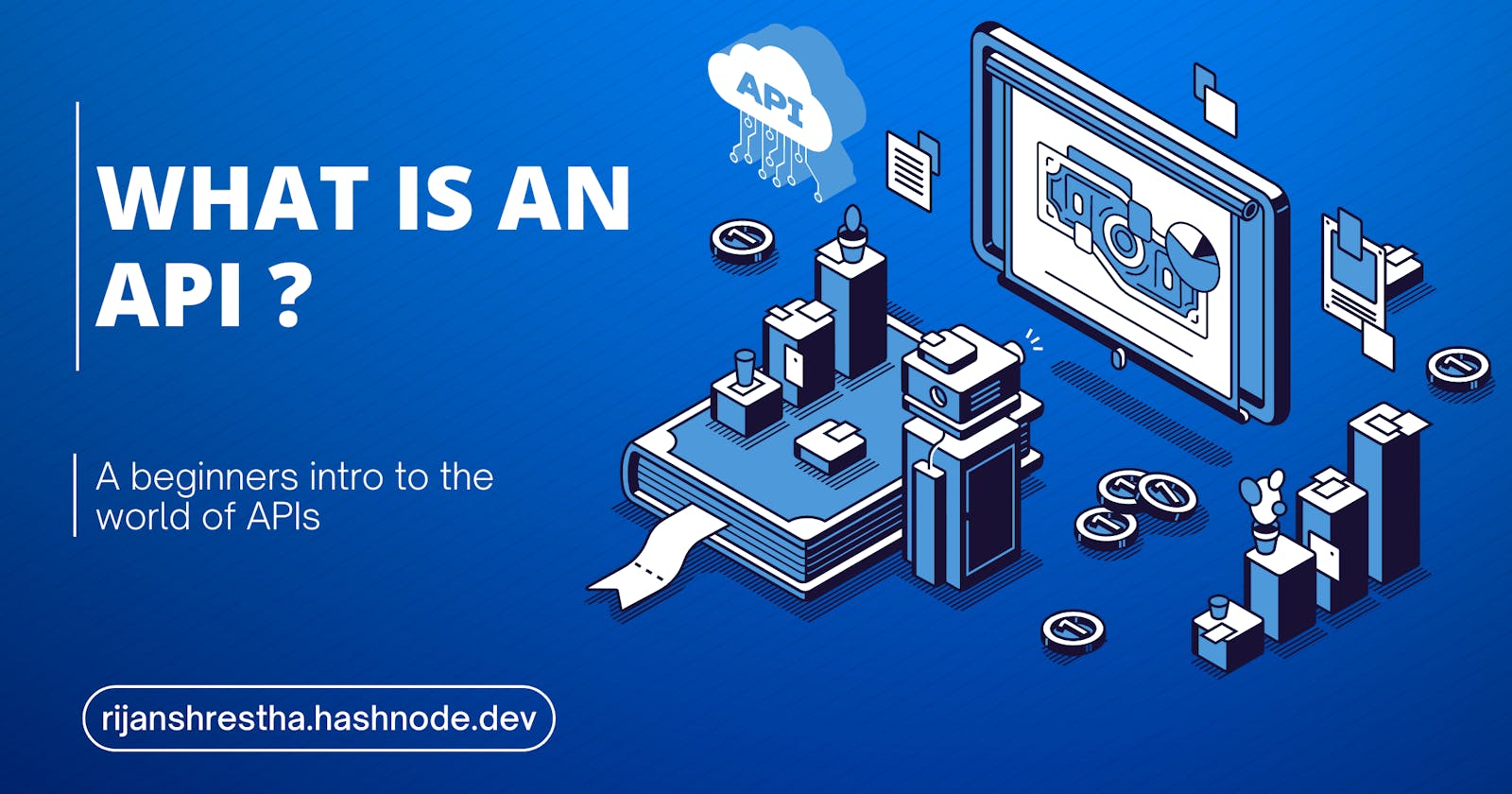What is an API? - For total beginners
A complete beginners intro to world of APIs
Introduction
In the world of technology, APIs are one of the most important concepts. APIs are integral to modern software development and play a crucial role in the success of many companies. APIs have enabled developers to connect disparate software applications and services, providing a seamless experience to users. In this blog post, we will explore what APIs are, their history, how they work, and the differences between webhooks and APIs. Additionally, we will also compare SOAP and REST, the two most popular API architectures.
An API (Application Programming Interface) is a set of protocols, routines, and tools that allow software applications to communicate with each other. In simpler terms, an API acts as a bridge between two or more software applications, allowing them to interact and share data. APIs can be thought of as a messenger that carries information between applications, enabling them to work together and provide enhanced functionality to users.
APIs are essential in modern software development as they allow developers to create new applications and services by leveraging existing ones. By using APIs, developers can access the functionalities of other applications, which saves them a lot of time and effort in developing new functionalities from scratch.
History of API
The history of APIs can be traced back to the 1960s when they were first introduced in the IBM System/360 operating system. Since then, APIs have evolved significantly, and today they are a fundamental component of modern software development.
The rise of APIs can be attributed to the growth of the internet and cloud computing. The internet enabled the creation of web APIs, which allowed developers to access web-based functionalities easily. Additionally, the growth of cloud computing provided developers with the ability to scale applications and services quickly, making APIs even more critical.
How does an API work?
To understand how APIs work, it's helpful to look at the different components involved in the process. These include the client, the server, the request, the response, and the protocols used to communicate between them.
Client and Server
In the context of APIs, the client refers to the application that makes a request to the server, while the server refers to the application that processes the request and sends a response back to the client. The client and server can be any two applications, such as a mobile app and a web application, or a web application and a database.
Request and Response
When a client sends a request to a server, it specifies the action it wants to perform. For example, a client might send a request to retrieve data from a server or to update an existing record. The request includes information such as the type of request, the URL of the resource being requested, and any parameters required for the request.
The server receives the request and processes it. It retrieves the data or performs the requested action and sends a response back to the client. The response includes information such as the status code, which indicates whether the request was successful or not, and any data that was requested.
Protocols
APIs use a set of protocols to specify how data should be transferred and how requests and responses should be formatted. The most common protocols used by APIs are HTTP and HTTPS.
HTTP, or Hypertext Transfer Protocol, is the protocol used by the World Wide Web. It defines how messages are formatted and transmitted and how servers and clients should respond to different types of requests. HTTPS is a secure version of HTTP that uses encryption to protect data transmitted between the client and server.
APIs can also use other protocols such as SOAP, or Simple Object Access Protocol, which is an XML-based protocol used for exchanging structured information between different applications, and JSON, or JavaScript Object Notation, which is a lightweight data interchange format used to transmit data between applications.
APIs can be divided into two main categories - RESTful APIs and SOAP APIs. RESTful APIs use HTTP protocols to transfer data, while SOAP APIs use XML protocols. Regardless of the protocol used, APIs always follow a set of standard rules and guidelines, ensuring that the communication between applications is seamless and efficient.
Working with APIs
To work with an API, a client needs to know the specific endpoints and methods provided by the API. An endpoint is a specific URL that provides access to a resource or functionality, while a method is a specific action being performed on the resource.
For example, a client might send a GET request to the /users endpoint to retrieve a list of all users in the system. The API server would then process the request and send a response containing the requested data.
APIs often require authentication to ensure that only authorized clients can access the resources provided by the API. This can be done using tokens or API keys, which are unique identifiers that are sent with each request to authenticate the client.
Conclusion
In conclusion, APIs are a critical component of modern software development. They provide a standardized way for different applications to communicate with each other, enabling developers to create new applications and services by leveraging existing ones. APIs use a set of protocols to specify how data should be transferred and how requests and responses should be formatted. The most common protocols used by APIs are HTTP and HTTPS. Understanding how APIs work is essential for developers looking.
Hope you learned something from this blog.
Happy coding!

